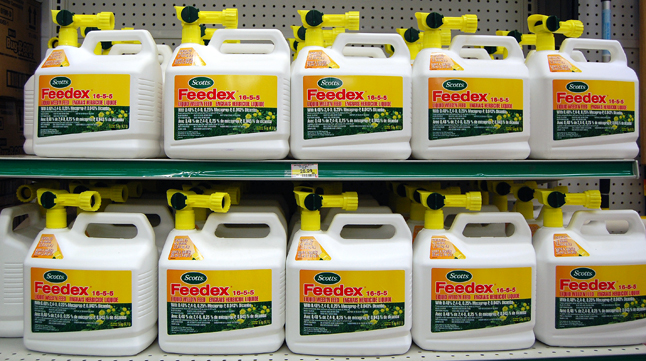By David F. Rooney
Just how green will Revelstoke become over the coming months? Council has, in general, certainly made the right noises, but the acid test — creation and passage of a bylaw to ban the city-wide use of cosmetic chemical pesticides — is yet to come.
Council has set Aug. 10 as the date by which staff must report back to it with bylaw options. And while that is a couple of months away, forces beyond the city’s boundaries are already beginning to muster and exert not-so-subtle pressures on the community to either stop the bylaw in its tracks or to water it down to the point that it is toothless.
Cosmetic chemical pesticides are — broadly speaking — those poisons that kill unwanted vegetation, insects, rodents and other unwanted life forms. However, what groups such as the North Columbia Environmental Society, Pesticide Free BC, the Canadian Cancer Society and the Canadian Association of Physicians for the Environment are most specifically concerned about are the weed-killers people apply to their lawns and gardens.
It’s not hard to see why. The poisons people have been using on their lawns and gardens are strongly suspected of causing a wide variety of cancers and, most recently, of being associated with increased risk of Attention-Deficit Hyperactivity Disorder (ADHD) in children (click here to read the Science Daily story, complete with references).
“Pesticides looked like a great idea at the time but now we know better,” says Dr. Warren Bell, former president of the Canadian Association of Physicians for the Environment.
Chemical pesticides were viewed as an industrial boon that would rid us of disease vectors such as mosquitoes and fleas and that would protest our crops from viruses and other plant diseases, fungi and voracious insects. But the dream of better living through chemistry has since become a nightmare as scientists document the way chemical contamination ravages the natural world — and people.
Bell said repeated studies in Canada, the United States and abroad over the last two decades have consistently shown a strong link between chemical pesticides and non-Hodgkin’s lymphomas (NHL). These are blood cancers that are treated by combinations of chemotherapy, monoclonal antibodies, immunotherapy, radiation, and hematopoietic stem cell transplantation. Here’s what the US National Library of Medicine at the National Institutes of Health said about the link:
“The incidence of non-Hodgkin’s lymphoma (NHL) has increased over 50% in the last 15 years. While small increases in risk of NHL among farmers have been observed in general occupational surveys, recent studies focusing on specific pesticides have observed much larger risks. Frequent use of phenoxyacetic acid herbicides, in particular, 2,4-dichlorophenoxyacetic acid, has been associated with 2- to 8-fold increases of NHL in studies conducted in Sweden, Kansas, Nebraska, Canada, and elsewhere. Canine malignant lymphoma has also been associated with dog owner use of 2,4-dichlorophenoxyacetic acid and commercial lawn pesticide treatments. There are much fewer data linking NHL to other types of pesticides, but triazine herbicides, organophosphate insecticides, fungicides, and fumigants have also been associated with increased risk of NHL. Pesticide exposures are not limited to agricultural populations but are widespread in the general population through use on lawns, golf courses, rights-of-way, and elsewhere. Since the use of pesticides, particularly phenoxy herbicides, has increased dramatically preceding and during the time period in which the incidence of NHL has increased, they could have contributed to the rising incidence of NHL.”
If you search the Government of Canada website using the keywords “non-Hodgkin’s lymphoma” and “pesticides” it will return more than 82,000 documents. One of them concerned a BC Cancer Agency study conducted in 2007 that showed a strong link between organochlorine pesticides and polychlorinated biphenyls (PCBs) and NHLs. This study predicted that, in 2007, an estimated 966 British Columbians would be diagnosed with non-Hodgkin’s lymphoma and 383 would die of it. One in 54 females and one in 44 males were expected to develop non-Hodgkin’s lymphoma during their lifetime. One in 119 females and one in 92 males were expected to die of non-Hodgkin’s lymphoma.
This is scary stuff. So what can we do about it?
CAPE would like to see all chemical pesticides banned, but that’s unlikely to happen anytime in the near future. Too much of our industry and infrastructure — agriculture, forestry, transportation, energy transmission and so on — depends on some use of chemical pesticides. But the cosmetic use of chemical poisons is a different story.
CAPE, the Canadian Cancer Society and environmental groups such as, locally, the North Columbia Environmental Society (NCES) want communities like Revelstoke to ban their use.
It sounds like a no-brainer. And for many people in our community it is. They refuse to purchase poisons for use on their gardens and lawns. We have all read or seen too many stories about toxins in our environment. Why add to the burden that is contaminating our environment?
But there are individuals and organizations that do not want communities to turn their backs on cosmetic pesticides. They are threatening and manipulative and have already touched base with people in our community.
Click here to read Part 2 of Revelstoke ponders the future: just how green will it be?




